Camera Gear for Weddings and Corporate Events
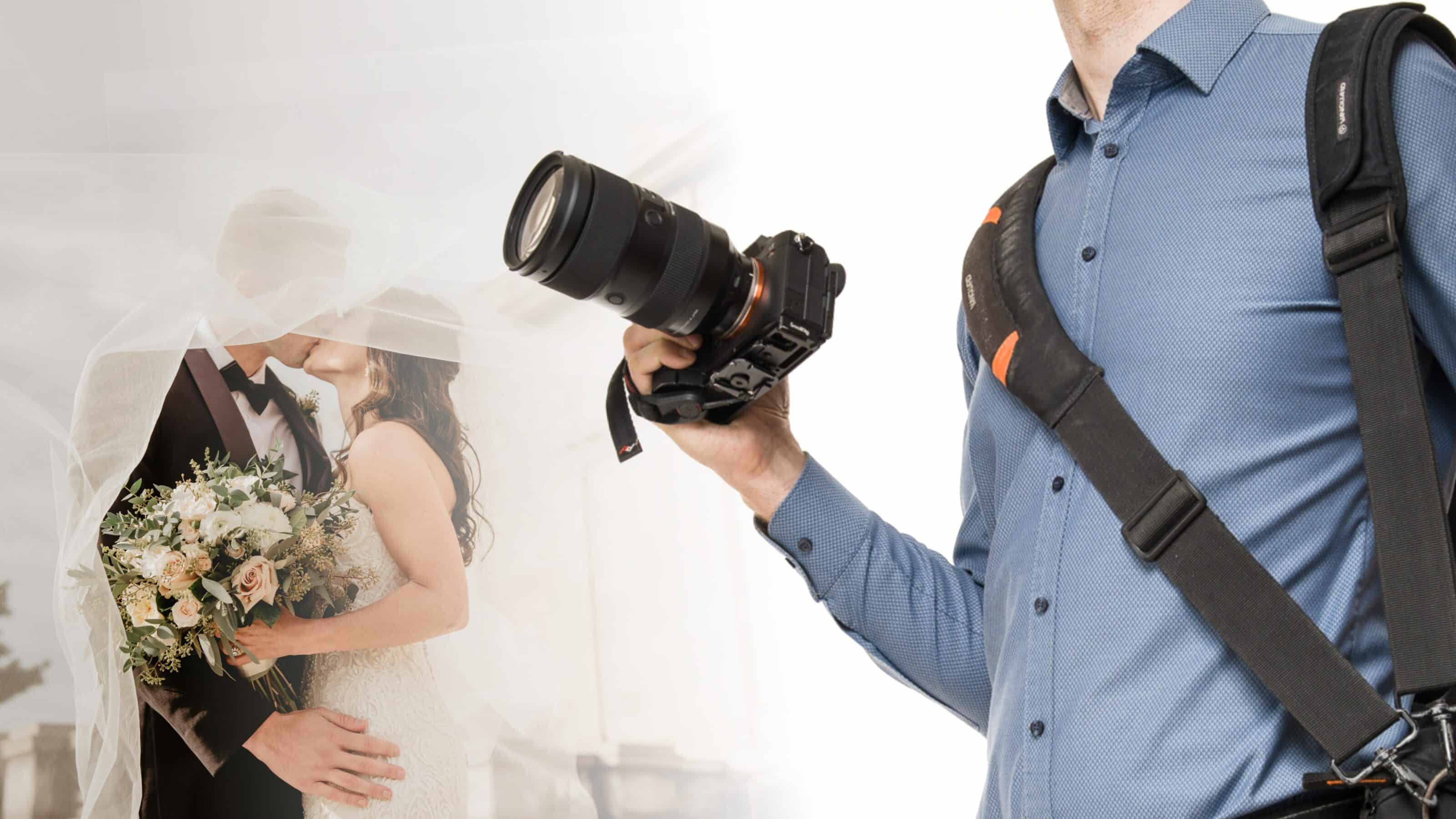
It’s important to have the right gear for shooting weddings or corporate events. There’s no need to buy ten lenses and lug them around all day when you’ll only use some of them. Learn how I chose my minimalistic gear for weddings and corporate events in this article.
Special event photographers have very different approaches to photography. As a result, they have different approaches to camera gear also. Some can comfortably hold all of their gear in their hands, while for others, even a large backpack is not enough. This is nicely illustrated on the Shotkit website, where many different types of photographers post their camera gear.
I certainly can’t speak for all photographers, but I can explain how I arrived at my current kit and the stages I’ve gone through in the last 13 years of special event photography. For me, that means about 190 weddings and various corporate events, conferences, competitions, and teambuilding events.
Basic rules for event photography camera gear
- Be able to shoot everything you need to.
- You don’t have to carry lenses with overly long focal lengths for weddings. You can usually get close to the main event.
- Other events can be hard to predict. You may be forced to take photos of speakers at a conference from a distance and not be able to get up close.

A second backup camera is a must-have.
- Have backup gear. If your camera and lens fall and get damaged, can you keep shooting using the rest of your gear? Not only does this mean a second camera, but also focal lengths that conveniently overlap. It won’t be perfect, but the goal is to find a solution.
- Have relatively fast reaction time. Reaction times of course depend on the specific event. With experience, you’ll be able to predict and prepare the right lens, but sometimes things get messy. You need to be able to change lenses quickly or reach for a second camera. You can practice this at home before the event.
- It’s best if you can carry everything or keep an eye on your equipment. You will probably worry about your favorite lens tucked away in a backpack somewhere in the corner of the restaurant.
Carrying your gear
I usually carry two cameras and use them interchangeably with different lenses so I can be more responsive. The decision is then how to carry them.
I’ve seen many different methods for carrying gear. In the beginning, I used an over-the-shoulder camera bag, or one with straps over both shoulders at once. That’s where I kept the second camera plus flash, another lens, and other gear. But after a few hours, my shoulders ached, and taking pictures wasn’t fun anymore.
Some photographers use a special shoulder strap so their cameras hang off their right and left sides. This solution is very fast, but not ideal in the rain. And it doesn’t solve the issue of carrying extra lenses and other equipment.
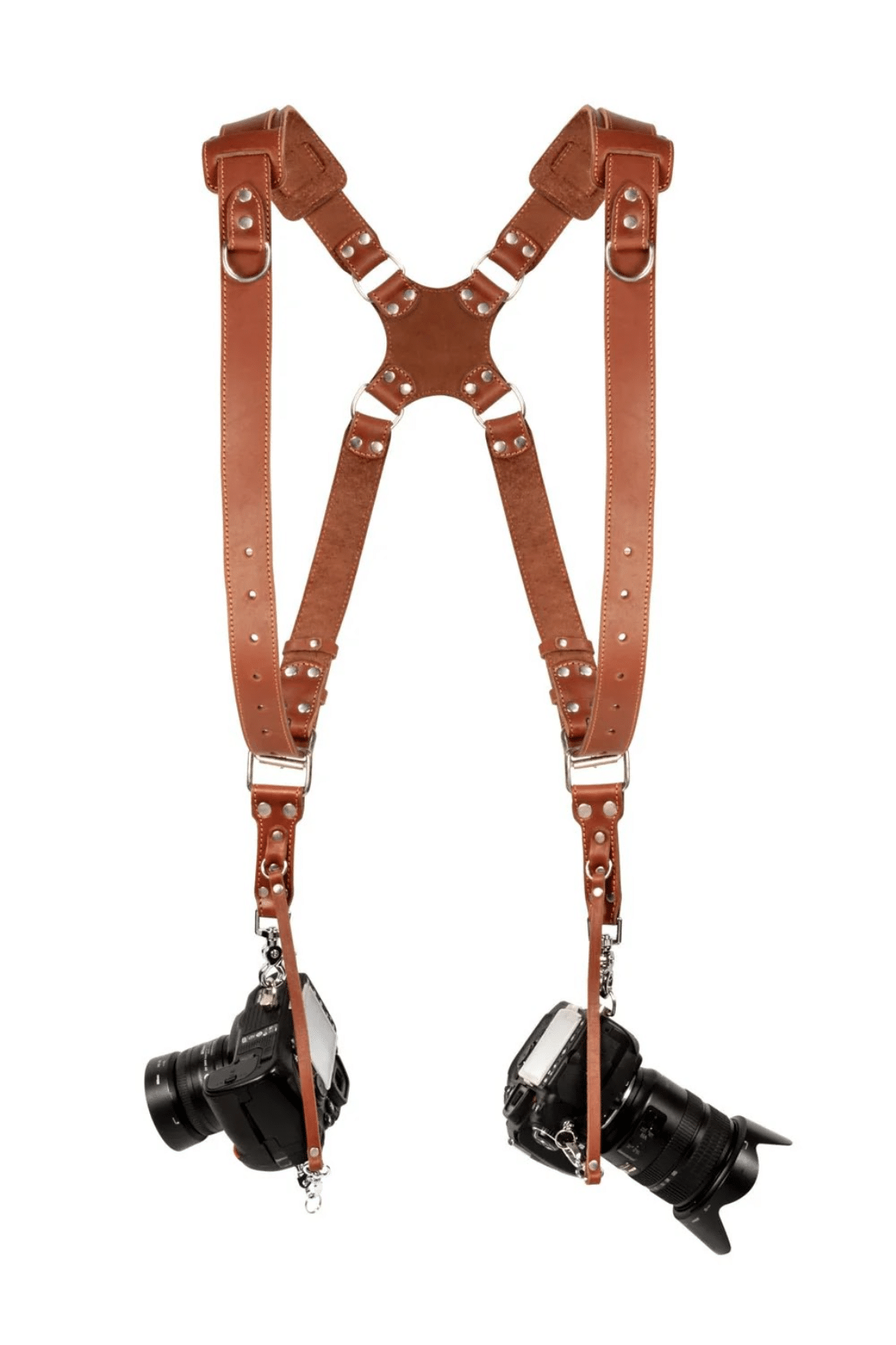
A lot of people simply carry a camera with one lens and leave the rest of the lenses in a backpack off to the side.
I switched to a padded belt holster system. This has pouches and clips to hook your camera onto. This saves your back and shoulders and your gear can be carried this way for up to 10 hours.
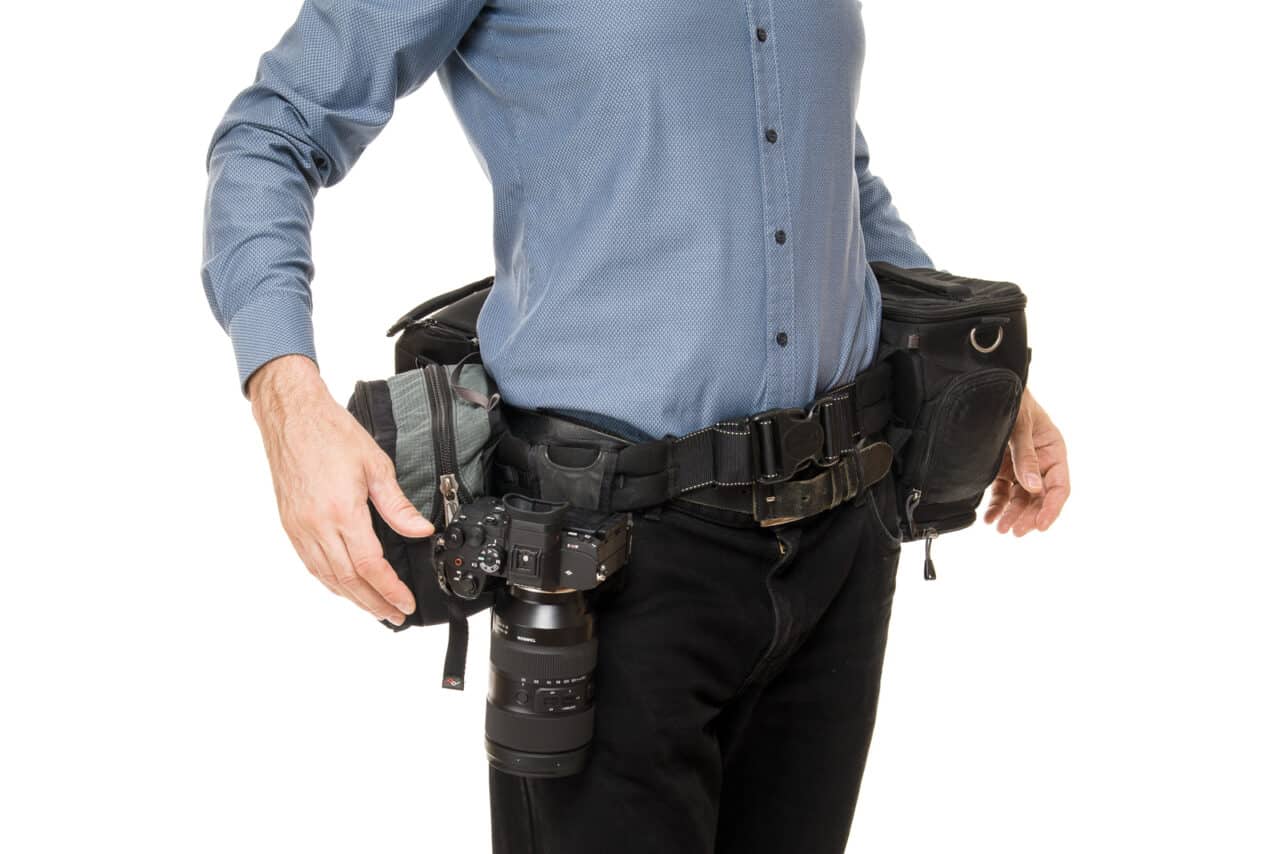
The belt holster system and all its components will be covered in another article. Now, onto the camera equipment itself.
Lenses
I use full-frame cameras so focal lengths do not need to be adjusted.
If I’m unsure of what to expect, a surefire solution is what’s called the holy trinity of lenses:
- 70-200/2.8
- 16-35/2.8
- 24-70/2.8
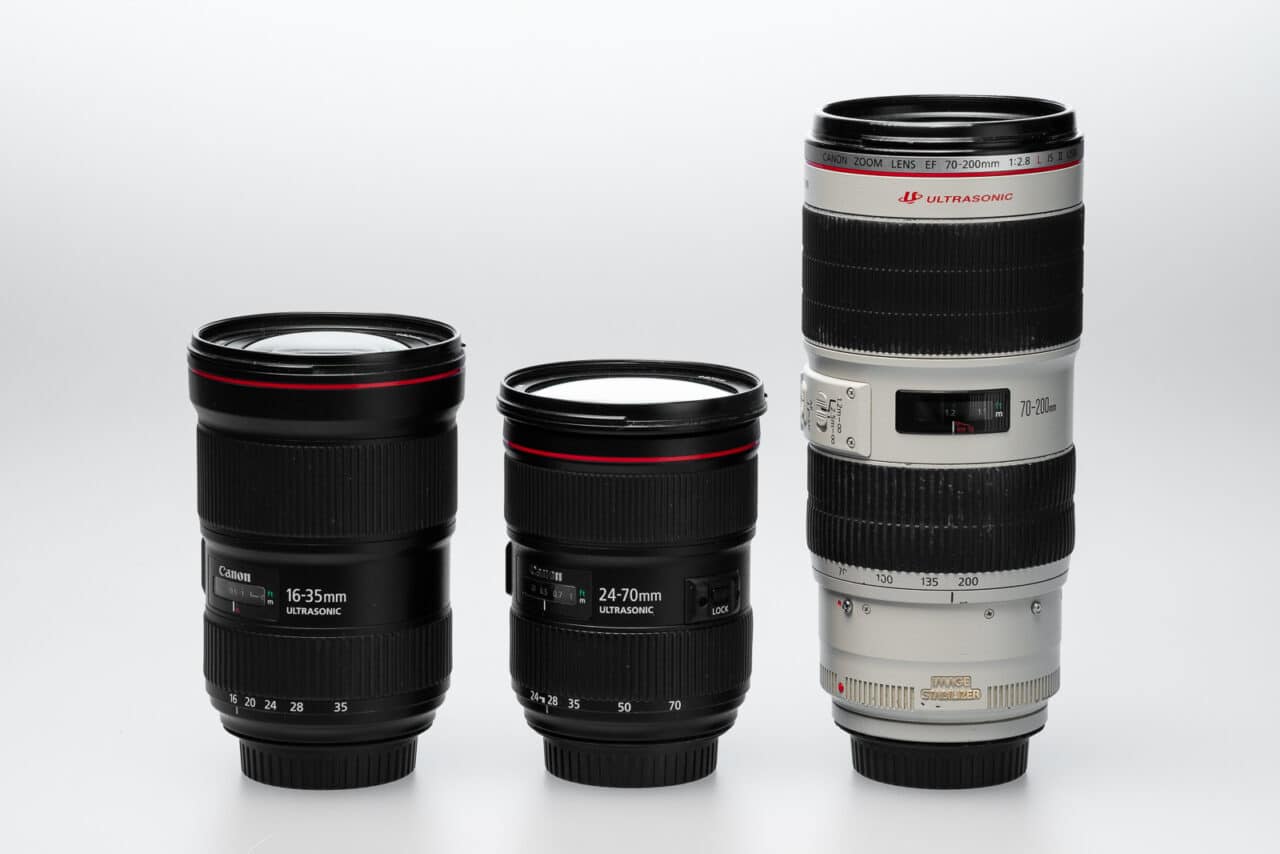
I use the middle lens (24-70/2.8) to shoot most of the event. I use the second lens to switch out lenses depending on the situation. At the wider end, I have an ultra-wide lens starting at 16mm (on a full frame), but this extreme is not always necessary. 20mm, or even 24mm is fine for most scenarios.
So far for me, this setup was most useful for most corporate events. I only used it for weddings in the beginning before I got more specialized gear.
“Faster” lenses are better for highlighting your subjects. They tend to have fixed focal points, so It’s good to have an idea of what’s going to be happening around you. For about three years, I used a combination of these standard lenses at weddings:
- 50/1.4
- 16-35/2.8
- 70-200/2.8 or 100/2.8 Macro
However, the 50mm telephoto lens was not enough. That’s why I often used a wider focal length lens on a second camera. As a result, I only used the 70-200mm lens for about 5% of the photos. It was gradually replaced with the 100/2.8 Macro. The macro lens is lighter and can be used for wedding ring close-ups and portraits.
In the end, I changed the main lens to a 35mm, added an 85/1.4 lens, and arrived at the following set for about 5 years:
- 35/1.4
- 16-35/2.8
- 85/1.4
- Extension tubes
Extension tubes are very compact accessories that help get wedding ring close-ups when used with another lens (here the 85/1.4).
Sony camera kit
I’m currently shooting on a Sony camera and surprisingly, there are only two lenses in my main kit:
- Extension rings
- 35-150/2-2.8
- 16-35/2.8
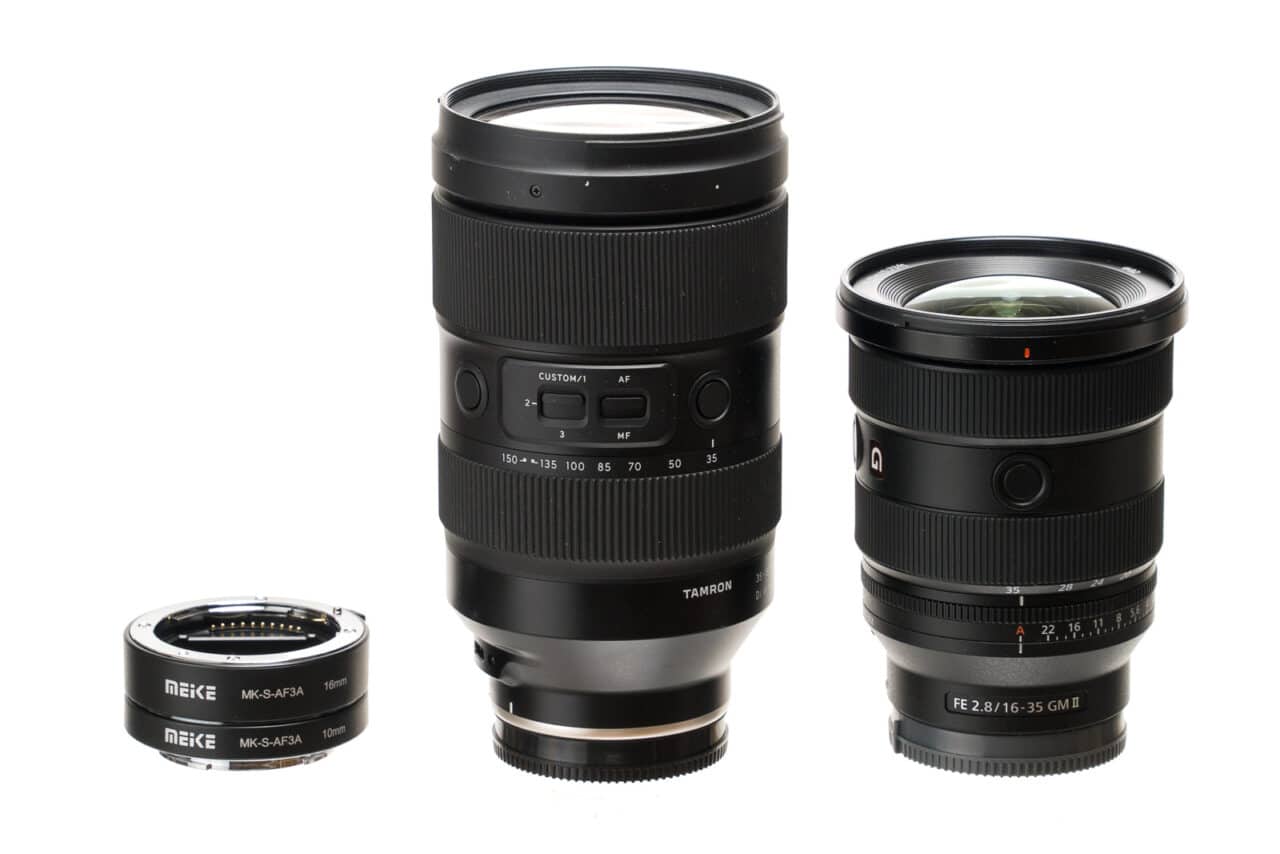
The first lens is a zoom lens, but it’s f/2 at 35mm. It’s close to my favorite lens, a 35/1.4. It also gives me a lot of flexibility. It gives me choice over the third lens that fits in my bag. I’m still experimenting and only time will tell which lens will last the longest. My current options are the 85/1.4 or the new 24/1.4, or maybe a 10-12mm ultra-wide lens, or some other wild card lens.
For all the combinations above, even if I damage one lens, I have others that cover a 35mm focal length. This has become so essential for me that I could shoot an entire wedding using just the 35mm.
All the equipment you need at your fingertips
Thanks to the camera bags, everything is readily available. When changing cameras, I can clip the first one on the right using the Peak Design Capture Clip while I pull the second one out of the bag on the left side.
I chose this solution because my main camera is in my hands most of the time, so it doesn’t need a bulky case. On the other hand, my second camera is hidden most of the time. If it rains, it’s pretty well protected thanks to the padded case. I either take pictures with the camera out in the rain or keep it hidden under my jacket.
When it’s rainy, I pack another accessory—a lens hood. This way, I can shoot without worrying about water droplets on the front lens (unless I’m shooting upwards). Of course, this assumes some type of water resistance on both the cameras and lenses.
Additional camera equipment
In addition to cameras and lenses, I also carry a flash and remote flash for various purposes.

A small water bottle also comes in handy, especially in the summer heat. And a good supply of batteries.
I don’t carry backup cards because both cameras shoot on two cards at the same time and have enough capacity—320GB for the main body and 160GB for the secondary (and the same size for backup cards). This may seem like too much, but with 60 megapixels on the Sony A7R V, my current record is 240GB of photos from a single wedding. Of course, you can shoot at a lower resolution.
New solutions are constantly being discovered
I am still trying out new things and new combinations of better camera equipment, even after many years. The belt holster system still works best for me. Tell us what type of gear you are carrying and how in the comments.
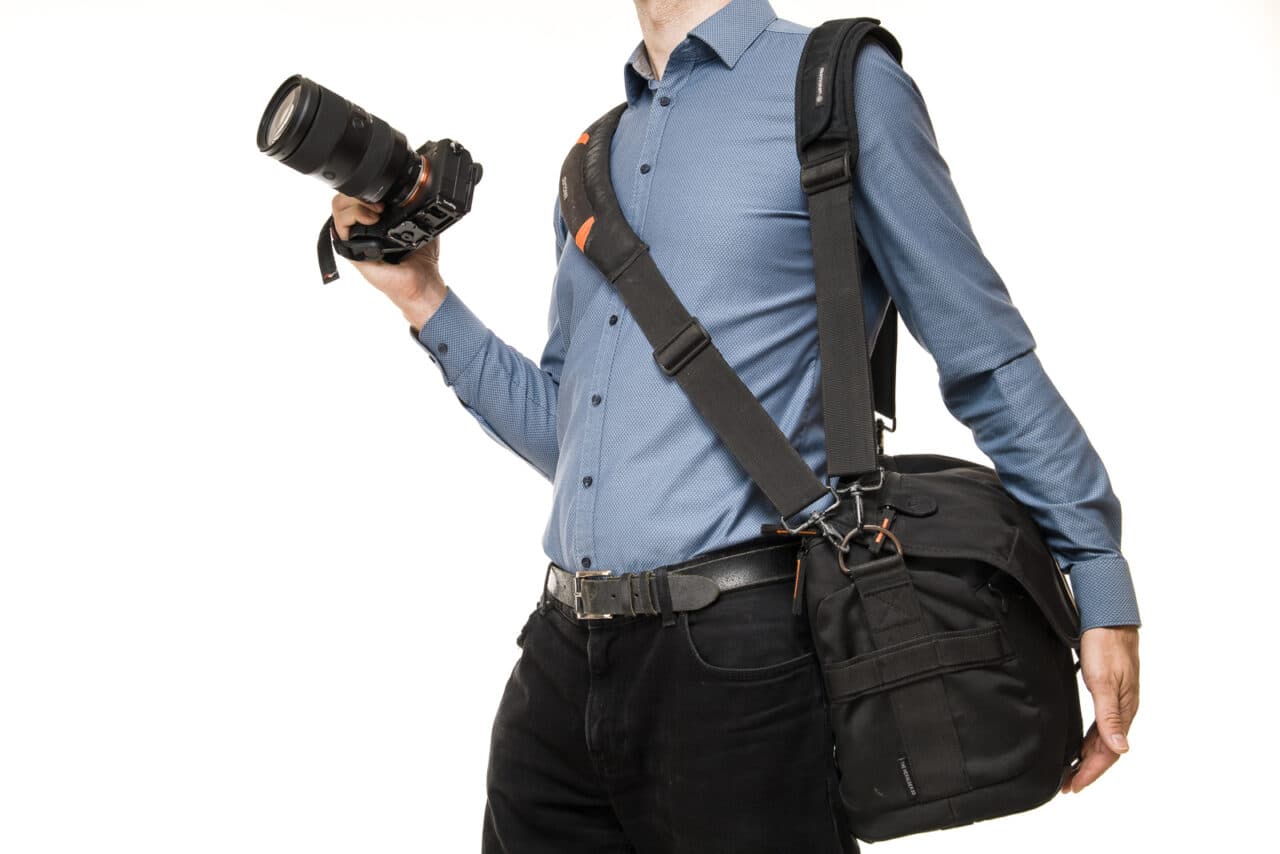
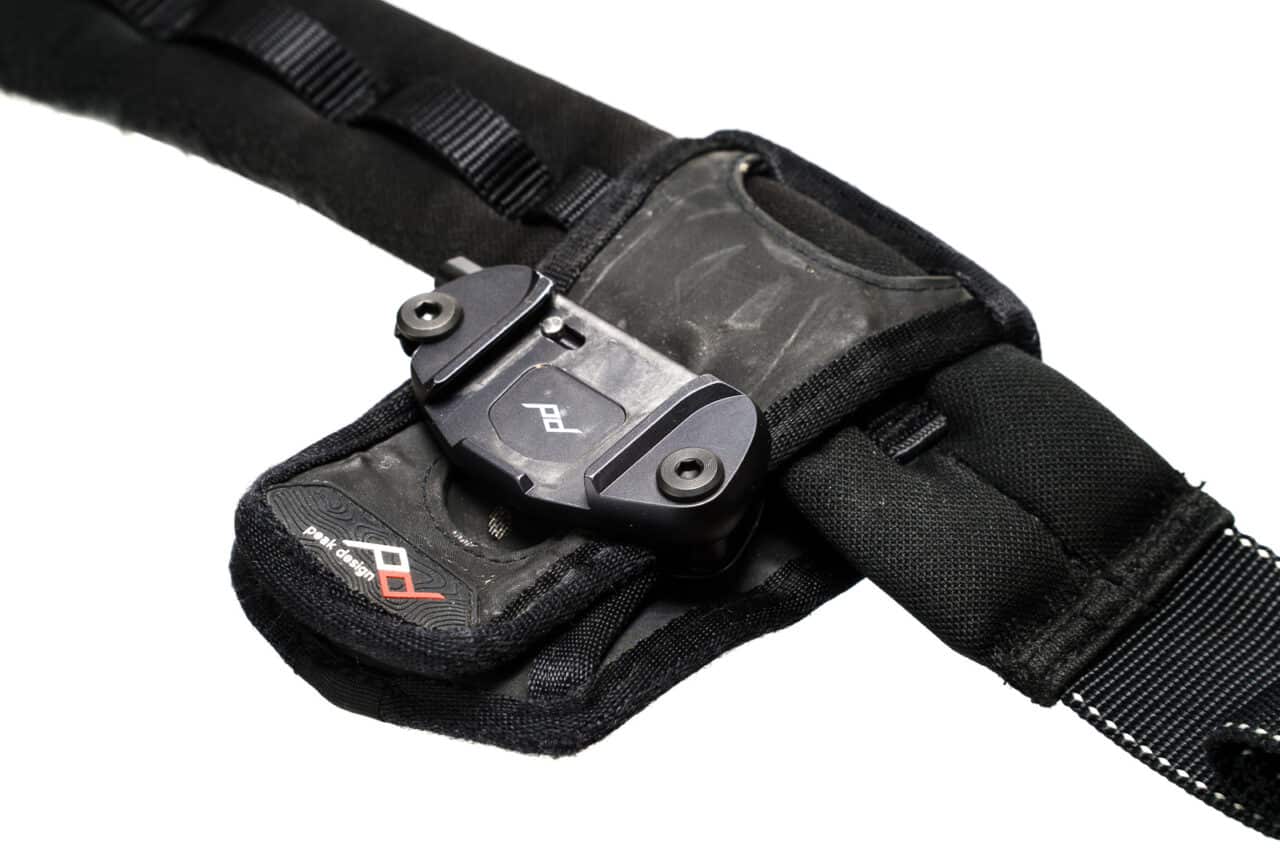
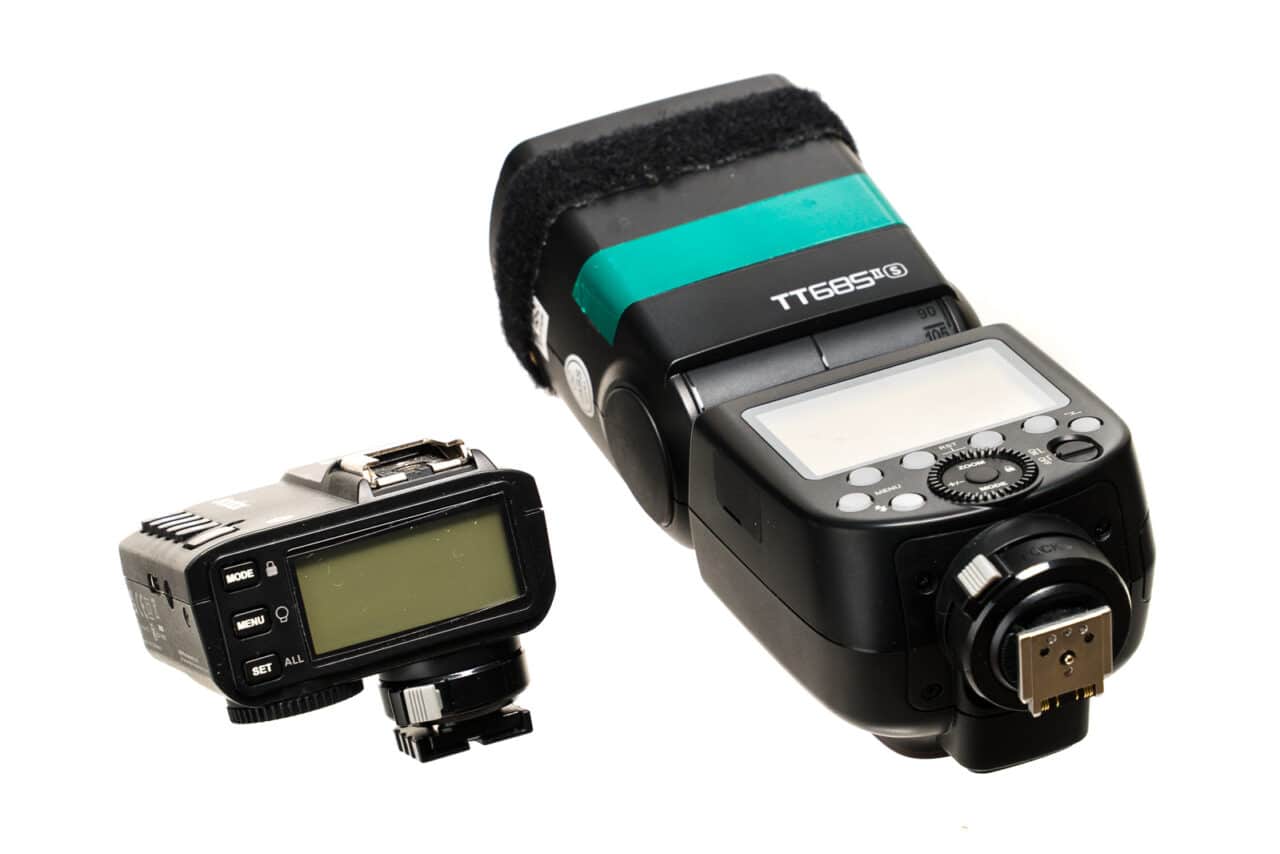
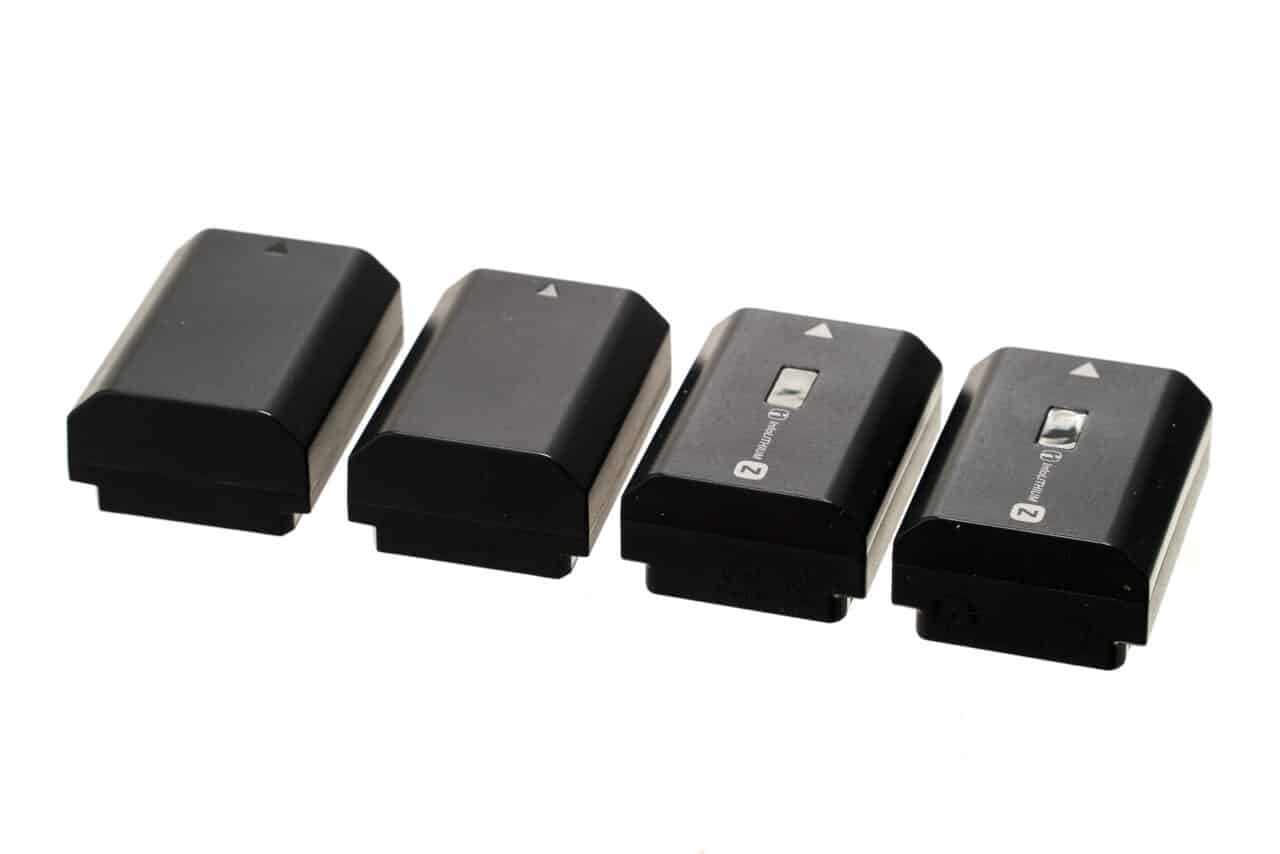

There are no comments yet.